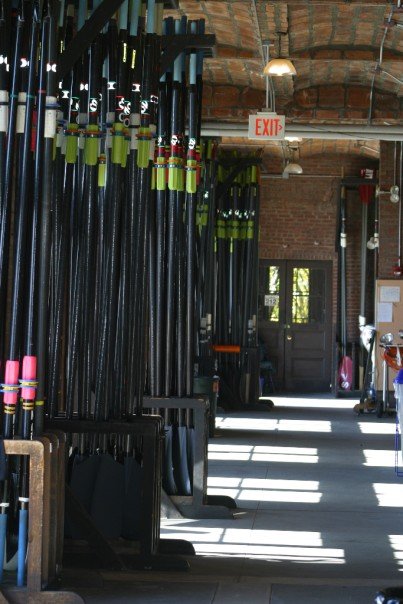This weekend, Henrik Stephansen officially kicked off the
indoor rowing season by breaking his own
world record for indoor lightweight rowing (video of beastmode in action courtesy row2k.)
How do you PR? That’s always the
question. Whether you’re an experienced rower, or this season will be your
first rodeo, you’ll be doing at least one test that will give you a chance to
see how your training and fitness have been progressing.
I started training at CrossFit Old Town in Alexandria, VA
this fall, and my Foundations instructor, along with a few other athletes
there, are participating in their first Mid-Atlantic Erg Sprints. Brandon asked
me for advice on boosting 2K performance. To help him and the other athletes at
CFOT be better prepared on race day, I pulled together a little cheat-sheet tweaking
race plan details.
First of all, there are three basic plans of attack for your
2K test: the even split, the fly and die, and the negative split. (Side note: one
of the most important reasons to keep a training journal, at least of your erg
tests, is so that you can see which one has given you your best performance. On test day, set your 2K splits for either 250m or 500m, and write down your data afterwards.) If you’re training as part of a team, your
coach has probably developed a focus on one particular plan, but whether you’re
training in a group or solo, it’s helpful to look at these plans and develop
strategies and insights that can help you reach your peak performance.
Here are examples of each of the three plans. Click the image to view a larger version.
The even split plan means you choose your goal time for the
test (say, 7:15 or 6:30), figure out the average split for that time (1:48.7 or
1:37.5), and then attempt to hold that split for the entire test. There are a
few important things to remember if you decide to even split your test. First,
be sure to choose a goal time that is reasonable for you, based on how you’ve
done in your preparation workouts and compared to your previous best times. If
your PR from last year is 6:50, you will likely not be successful trying to
break 6:00. Also, the beginning of your test may feel tough, like you are
working from the first stroke. The focus should be holding your goal split with
minimal effort and maximal relaxation. As the test goes on, it will be
increasingly difficult to hold that split, so relax, breathe, and stay
consistent.
The fly and die plan utilizes your goal split as well, but
in a very different way. Physiologically, rowers train to pick the boat up out
of the water, accelerate it to faster-than-race-pace speed, and then hold onto
that speed for as long as possible. Flying and dying is focused on doing the
same thing on the erg: going harder than your target split for as long as
possible until your body forces you to shift to a slower split. Many times,
rowers get excited during erg tests and regardless of the plan they went into a
test with, there is a fly-and-die element from race-day adrenaline. It’s
important to realize that on-the-water races usually have a race profile like
this, and if you find yourself struggling in the middle thousand meters of your
test, dialing in to your race focuses—whether it’s a power 10 at the 1000m mark
or a 15 to sit up at 500m to go—will help you pull out a good score no matter
how much your legs and lungs are hurting.
The negative split plan, in my opinion, sets rowers up best for a
good test. This is especially true if you suspect you’ll be faster on race day
than your previous test, but you’re not sure by how much. To set up your plan,
calculate the split of that previous test (e.g., 7:20 is a 1:50 split, 6:20 is
a 1:35 split), or make your best guess at what you think you can do on this
test. During your test, focus on holding a split close to that personal best
for roughly the first 1000m, and then get progressively faster through the
second 1000m. An important thing to remember is that the
beginning of the test will probably feel very easy. If it feels good to go
harder in the first 20 strokes than your goal split, that’s okay, but the most
important focus is locking onto the “easy” split with a good rhythm, good
breathing, and minimal effort. You will be able to find more speed later in the
test by increasing the stroke rating, sitting up, and starting to push. I
usually break the last 500m into 10-stroke increments, trying to increase my
stroke rating and get faster with each one.
Whatever you decide is the most effective 2K plan for you on
race day, remember that if you do it right, you’re going to leave absolutely
everything out there. Something will probably go worse, and also something go
better, than you’d envisioned—and it definitely helps to do a walk-through
visualization on the erg in the day or two before. And as my high school coach
told us, you can do anything for a minute, so when the final meters show up on
your monitor, buckle your seatbelt and go for broke. Good luck and go fast!
**New for Winter 2015: Esther Lofgren 2K Clinics! Check them out here...**
**New for Winter 2015: Esther Lofgren 2K Clinics! Check them out here...**















